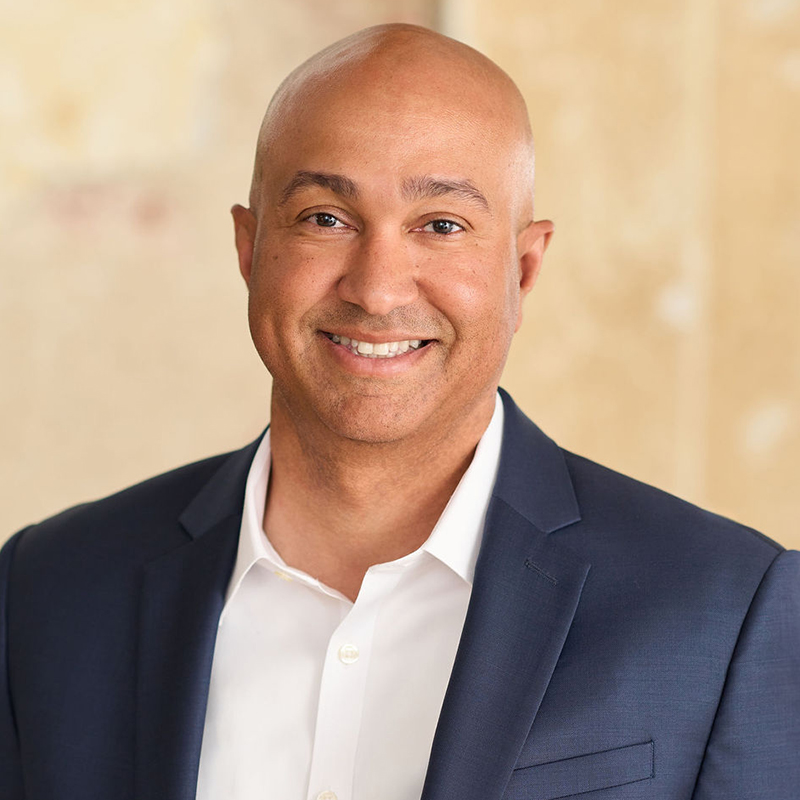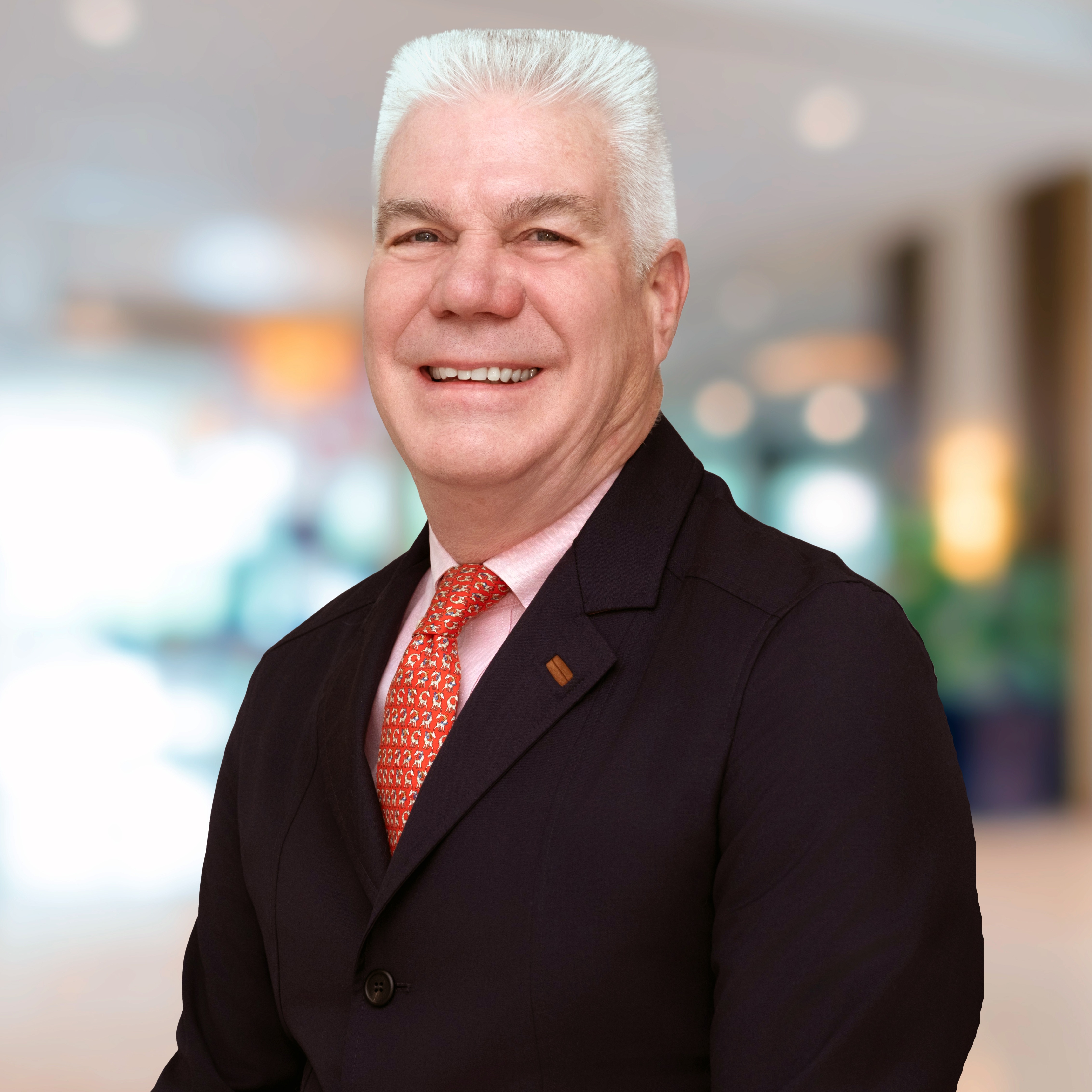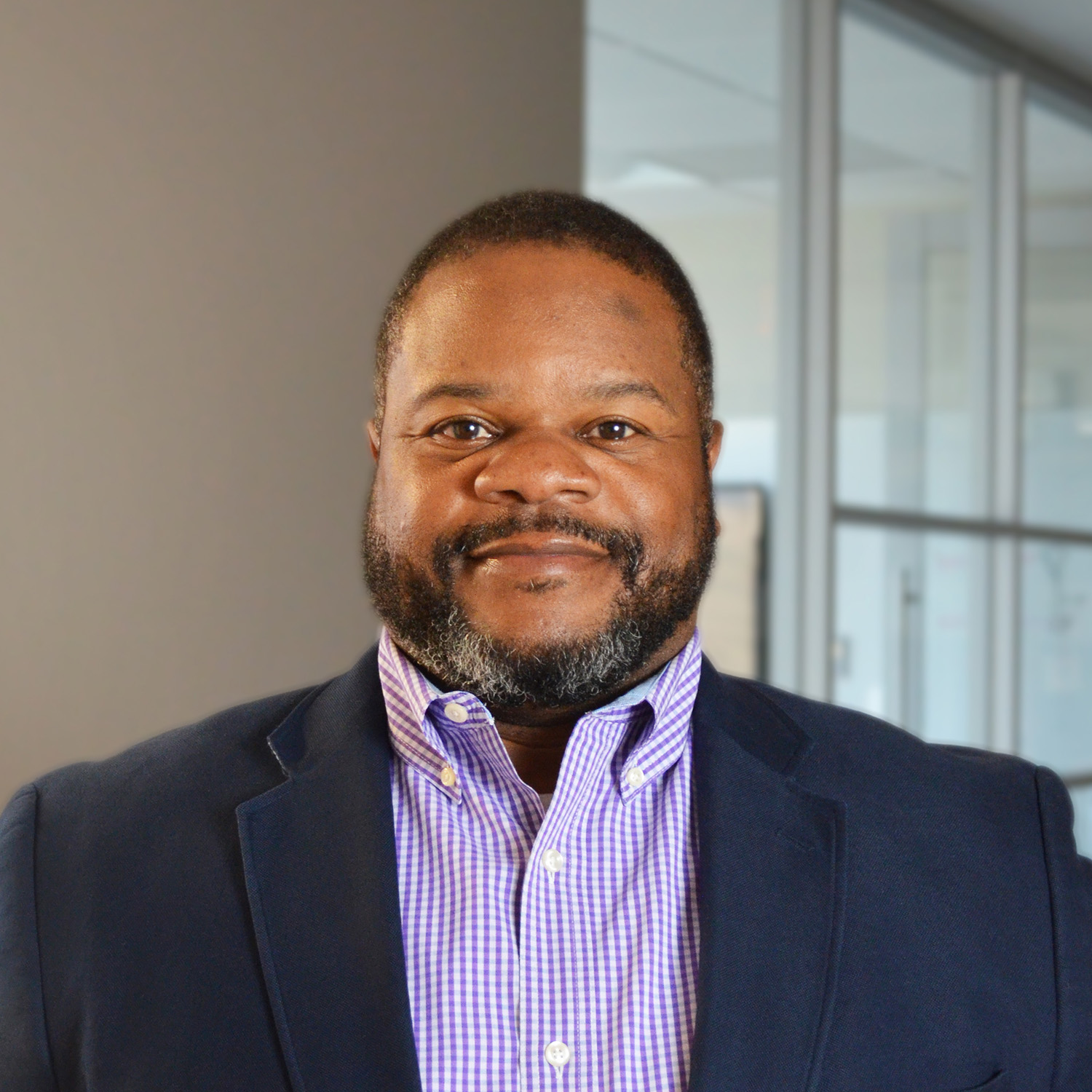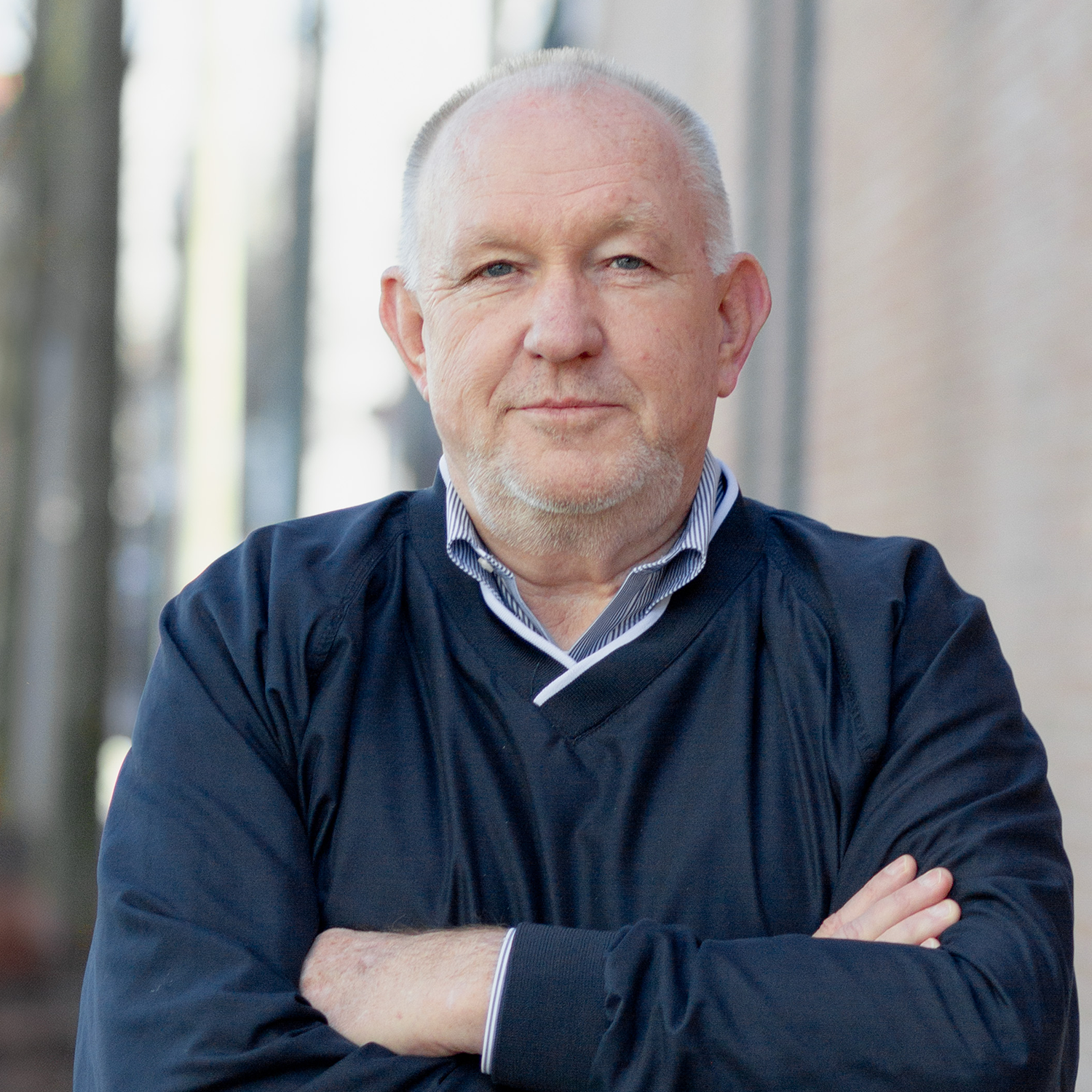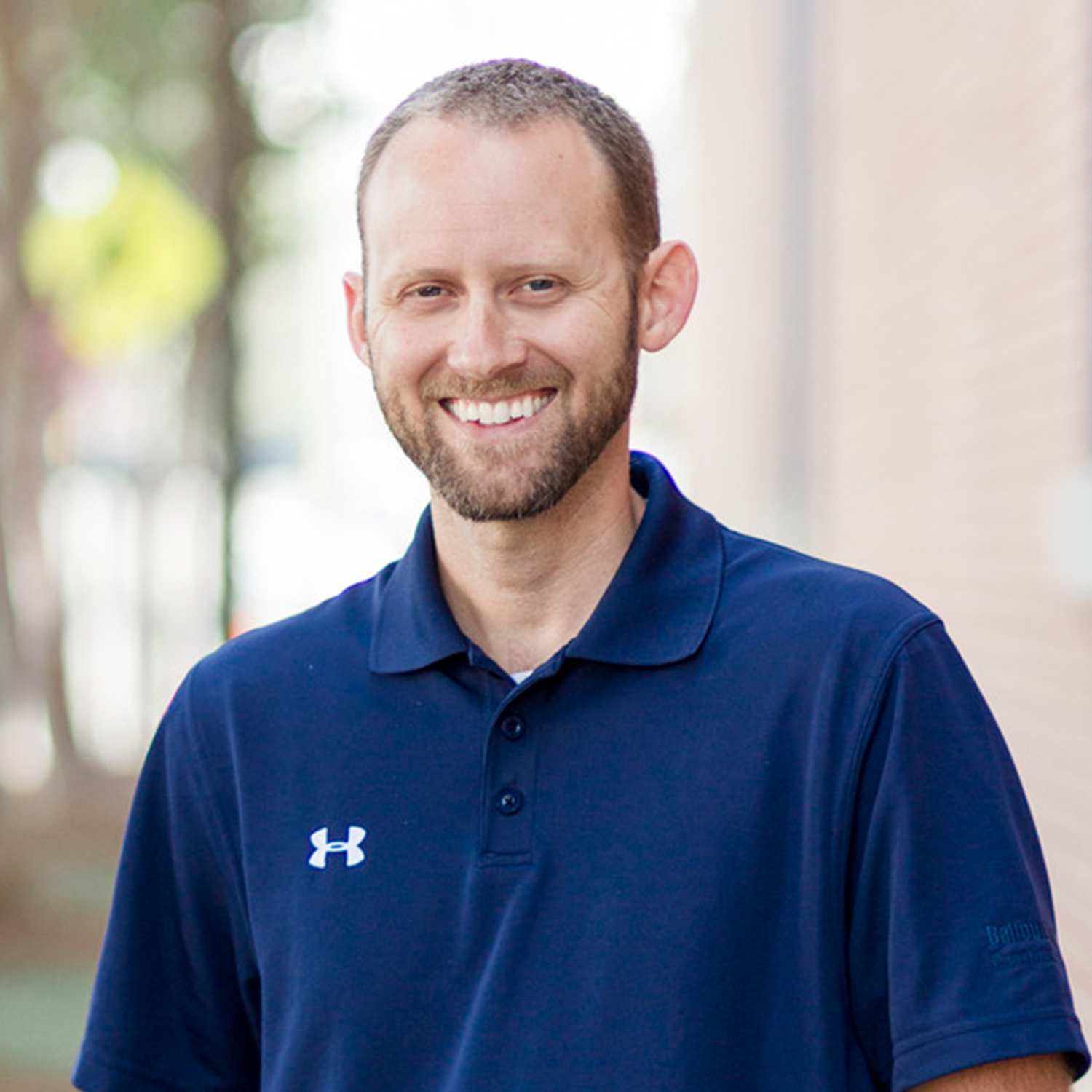Randy serves as Operations Director at Balfour Beatty and holds a degree in Mechanical Engineering from Penn State. He brings strong leadership and technical expertise to every project, ensuring operational excellence, team alignment, and client-focused delivery across all phases of construction.
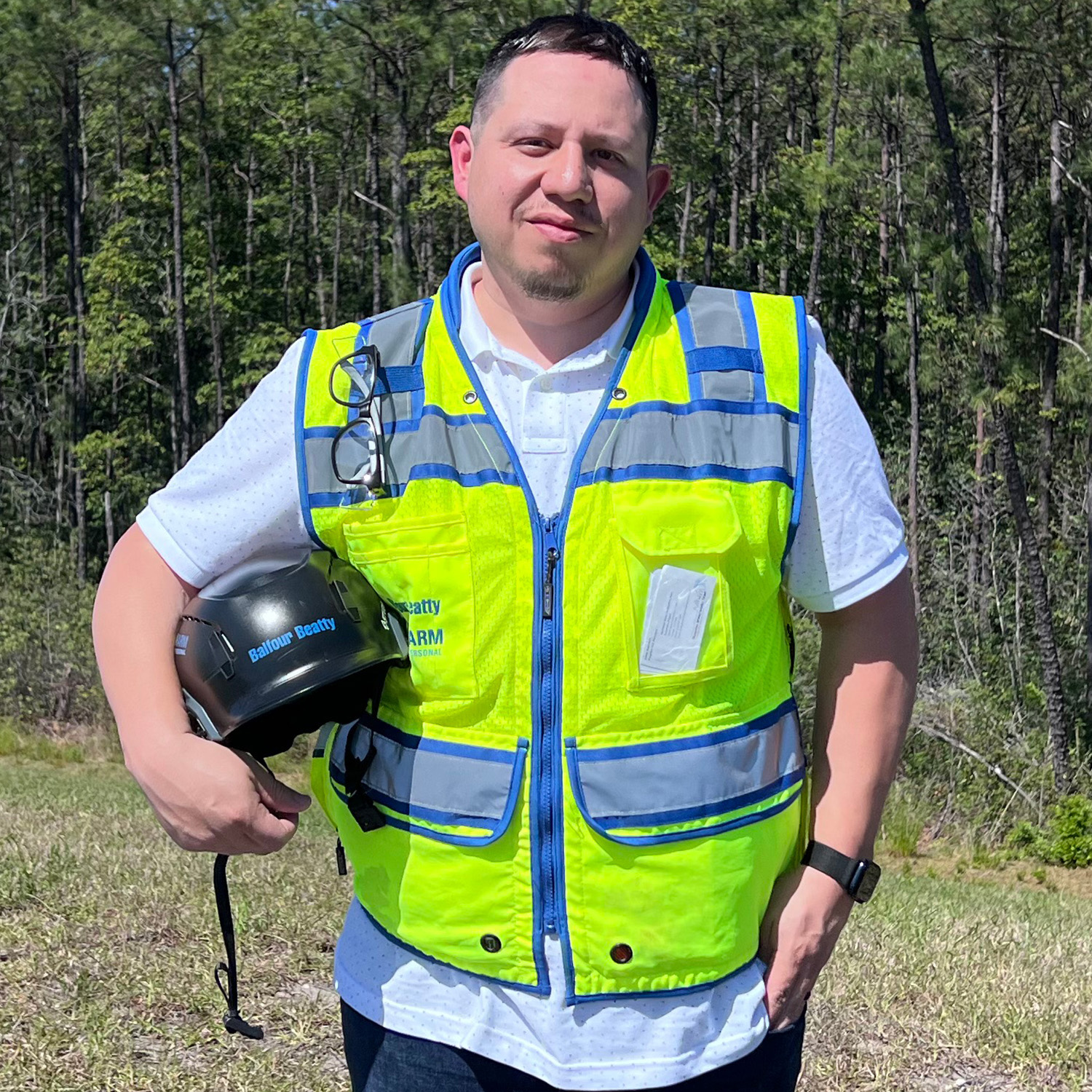
Alex Ramos
Relentless Ally
Striving for Safety
When thinking of construction safety, images of hard hats, protective glasses and neon vests come to mind. But safety encompasses so much more than personal protective equipment—every choice counts, and a split-second decision on a jobsite can change a life forever.
Alex Ramos, a safety, environmental and health manager for our civils operations in the Southeast, is passionate about making safety personal, constantly seeking to enhance his safety expertise and ensuring that all of his teammates, when faced with difficult decisions, are equipped to make the right choices.
Managing Across Miles
Balfour Beatty’s industry-leading commitment to safety was the primary factor that drew Alex to pursue a career with Balfour Beatty. Before joining our team, he worked for a safety consulting firm, but Balfour Beatty’s steadfast dedication to Zero Harm stood out from the pack and led him to join the business in 2017.
Today, Alex travels throughout the Southeast conducting safety audits, offering safety management guidance and providing ongoing training for our teammates and trade partners. Whether he is at our Harkers Island Bridge Replacement project in Harkers Island, North Carolina, the Effingham Parkway project in Rincon, Georgia, or any of the large-scale infrastructure projects on which he oversees safety, Alex can always be found with his sleeves rolled up, working tirelessly to ensure our teams and surrounding communities stay safe.
On any given day, Alex is responsible for managing safety across 10 or more jobsites in multiple states. Unlike a high-rise development in which workers remain within a relatively small geographic radius, crews on civil infrastructure projects are often spread out across many miles. This might make the task of managing safety daunting to some, but Alex has honed his training and audit practices to ensure no safety issue is overlooked. Many of Balfour Beatty’s safety requirements exceed those of the Occupational Health and Safety Administration (OSHA), and Alex believes in his teammates’ leadership to maintain safe jobsites.
“Safety is more than just an aspect of what we do, it’s deeply woven into the culture at Balfour Beatty,” says Alex. “When it comes to keeping our jobsites safe, the key is teamwork. Just as it takes a team to complete a construction project, it takes a team to make sure each and every person on our jobsite and in the surrounding community stays safe.”
Alex is a firm believer that communication is the foundation to safety. Although Alex regularly visits the jobsites he manages, he can’t be everywhere at once. Because of this, he relies heavily on personal touchpoints with his teammates. Alex ensures that everyone on-site is empowered to contact him with questions or concerns but also trusts project engineers, project managers, superintendents and forepeople to effectively monitor safety.
While it is easy to get caught up in the minutiae of day-to-day operations, Alex encourages his teammates to regularly step back and look at the bigger picture of safety. Through a three-question call-and-response at the beginning of every meeting, Alex helps keep his teammates focused on safety fundamentals.
Question: Whose job is safety?
Answer: Mine.
Question: Are you committed to “Zero Harm”?
Answer: Yes.
Question: Who has the authority to stop work because of a safety concern?
Answer: I do.
“Keeping those three questions at the forefront of everyone’s mind ensures that we are all on the same page,” says Alex. “Whether I am on-site or not, our teams make sure that safety is always effectively communicated.”
Making Safety Inclusive
One of the most important steps to getting on the same page is ensuring everyone on our jobsites understands safety materials. According to the National Association of Home Builders, nearly one in three construction workers identify as Hispanic/Latinx, and approximately half of construction laborers identify as Hispanic/Latinx. Translations of these essential materials allow our teams and partners to make informed, safe choices when faced with split-second decisions.
Alex, who is fluent in Spanish, has also gone above and beyond his day-to-day responsibilities by helping translate company-wide safety materials such as Toolbox Talks, training materials, jobsite signage and more. His efforts ensure we communicate with precision and accuracy to our diverse project teams and trade partners across our entire U.S. operations.
“These materials are vital to the success and safety of our projects. We can’t afford for anyone to miss this information,” Alex says. “Our teams need to be able to read and understand the information. Translating them is one way to make sure that’s possible.”
The Spanish translations of safety materials have been successful in maintaining greater cohesion and consistency for Balfour Beatty teams across the nation. Alex’s previous role as a safety consultant gave him an understanding of unique demographic and dialect needs across different regions, and he hopes to see safety materials translated into more languages in the future.
Continuing Safety Education
Alex’s passion for safety and desire to continue learning have inspired him to advance his education. Most recently, Alex earned his Associate Safety Professional (ASP) certification, a prerequisite of which was earning his associate degree in construction. The degree and certification processes were not easy; Alex studied and took classes on his own time, learning valuable lessons he brings with him each day to our jobsites.
“Ongoing safety training is crucial to our goal of achieving Zero Harm,” says Eric Yates, regional safety, environmental and health manager. “Alex’s initiative in pursuing and achieving the ASP certification demonstrates his continued commitment to improving both himself and our overall safety performance.”
Though proud to have achieved his ASP certification, Alex is far from finished. “I never dreamed I would get my degree or certification, but now that I know I can do it, why would I stop here?” He is excited to tackle his next endeavor: earning his Certified Safety Professional (CSP) certification. The first step? Completing his bachelor’s degree.
An inclusive safety leader who is continuously raising the bar in our pursuit of Zero Harm, Alex Ramos knows first-hand that choices made in a split-second can save a life. And on his watch, those choices are sure to be safe ones.
Read More

Keith Nixon
Relentless Ally
Paving a Legacy Across the Southeast
Keith Nixon doesn’t have a crystal ball to predict what’s on the horizon for mega infrastructure projects. But with 35 years of industry experience spanning the full gamut of preconstruction and operations, a track record of trusted partnerships and leading expertise in collaborative contracting models, he doesn’t need one.
As business development director for Balfour Beatty’s infrastructure operations in the Southeast, Keith channels that experience into forecasting the future—how to accurately price it, how to adequately staff it and how to effectively build it to last for his clients and communities. It’s a one-of-a-kind role that demands a unique blend of intuition, precision analysis and strategic problem solving, and no one is better suited to fill it than Keith.
Since joining Balfour Beatty in 1999, Keith has played a vital role in shaping the evolution of our infrastructure business in the Southeast. His legacy is paved into the numerous interstates, roads and bridges Balfour Beatty has delivered in the Carolinas and Georgia—projects totaling nearly $1.7 billion that continue to shape how people live, work, travel and play.
Whether he helped bring them to life in the field, behind a computer crunching thousands of numbers or in a combination of both roles, Keith’s impact on our business, industry and communities is undeniable.
A Trusted Voice in Collaborative Contracting
As Keith’s career evolved, so too have the skillsets he brings to his projects and partners. As collaborative contracting models began to take root in the public sector, Keith recognized a need to become well-versed in design-build and progressive design-build, two of the leading types of collaborative models. Like anything Keith endeavors, he set out in earnest to gain not just an understanding but a mastery. He became involved with the Design Build Institute of America (DBIA) and assumed the leadership role over Balfour Beatty’s Southeast infrastructure alternative delivery operations in 2017.
“While public clients have historically been slower to adopt collaborative models than in the vertical buildings sector, I recognized a growing appetite for their application due to faster procurement, improved risk mitigation, better cost management, early collaboration and other benefits as compared to traditional bid build,” Keith recalls.
Firsts at Fayetteville
Keith put those skills to the test as design-build manager on the I-295 Fayetteville Outer Loop project in Fayetteville, North Carolina. From the outset, the project faced significant delays due the North Carolina Map Act, which required the North Carolina Department of Transportation (NCDOT) to compensate landowners for properties included on future transportation maps. As the NCDOT addressed Map Act-related settlements and budget adjustments, the project was effectively suspended.
Compounding these issues, Hurricane Florence made landfall in September 2018, resulting in a catastrophic, 500-year flood event to the corridor connecting I-95 and Fayetteville Outer Loop. At the time, the Fayetteville Outer Loop project design was only planned to withstand a 50-year flood event. In the wake of the devastation, former North Carolina Governor Roy Cooper emphasized the importance of resilient infrastructure to the state’s rebuilding efforts.
In response, Keith partnered with the owner to proactively propose improvements bringing that segment of highway to a 100-year design standard. His initiative sparked broader conversations about the project’s untapped potential, ultimately leading to the inclusion of additional segments of I-95. Over the next 18 months, the project team successfully negotiated and integrated the expanded scope through a progressive design-build approach. The project grew from $129 million to $240 million in what became the largest change order and the first use of progressive design-build in NCDOT history.
“It was a win-win,” Keith recalls. “Balfour Beatty received critical time extension, and the owner was able to accelerate construction of I-95 by 15 years and bring it up to required standards. It was a truly collaborative effort.”
Moreover, the change order also reduced risk for both Balfour Beatty and the client. Because the change order was processed as a lump sum, it reduced our risk of incurring quantity overruns and the client’s risk of cost overruns.
Balancing Risk, Research and Reason
Balfour Beatty has gone on to procure additional collaborative contracts with NCDOT, including our largest regional project to date, U.S. 70 James City. Although Keith estimates that approximately sixty percent of infrastructure opportunities will soon be procured under collaborative models, many hard-bid and other traditional delivery opportunities still abound.
No matter what the delivery model, Keith has his eye fixed firmly five to seven years into the future, assessing every opportunity through a disciplined lens of risk tolerance, margin health and other critical decision factors that ensure Balfour Beatty achieves sustainable business growth.
While Keith bases his proposals on many known quantities, he also contends with much that is unknown. Due to market and supply chain volatility, a project priced two years ago at $100 million could easily have swelled to $200 million today. Keith’s longstanding relationships in the design and engineering communities as well as with industry associations such as the Associated General Contractors of America (AGC) empower him to better anticipate these uncertainties in an industry that is becoming ever-more dynamic by the day.
Keith’s precision proposals are a powerful advantage in procuring work across every delivery type, but he is quick to credit Balfour Beatty’s integrated capabilities as the driver of success in his final bid numbers.
“You win with shorter schedules. You get shorter schedules by understanding the scope of work better than the competition, maintaining stronger relationships with the subcontractors who have solid production histories and then pricing the job correctly,” affirms Keith. “It’s about having the right leaders on the ground with the right blend of skills.”
An Architect of Change
A respected visionary within Balfour Beatty and the construction industry at large, Keith Nixon is an architect of change and an advocate for progress. His career – and the projects he has touched – are a testament to value of cultivating diverse skillsets, establishing trusted partnerships and leading with clarity and consistency.
Read More

Kevin Jolin
Technical Systems Director, US Rail
Relentless Ally since 2023
Kevin Jolin is a trusted and respected business leader with more than 20 years of experience spanning technical and program management, systems integration, operations, business development and product support. As the technical systems director for Balfour Beatty’s US Rail operations, Kevin leads complex infrastructure programs with a focus on operational excellence, collaborative leadership and quality execution.
Since joining Balfour Beatty, Kevin has been a major contributor to the successful completion of the system, traction power and SCADA packages for the Massachusetts Bay Transportation Authority Green Line Extension and the notable Los Angeles International Airport’s (LAX) Automated People Mover (APM), where he serves as technical advisor. On the Caltrain Design-Build Electrification project, his leadership has been instrumental in the successful interconnection, testing and commissioning of 38 electrical facilities across a 52-mile corridor, including substations, switching stations and wayside power cabinets. In addition, Kevin also provides organizational support for Balfour Beatty’s Total Power Group manufacturing operation.
A former U.S. Marine, Kevin brings discipline, focus and strategic insight to every engagement. He is deeply committed to team development, organizational ethics and continuous improvement.
Kevin is pursuing a Bachelor of Science in Electrical Engineering at Arizona State University and holds additional academic credentials in business management and electrical engineering technology. He is an active member of the Project Management Institute and the International Council on Systems Engineering.
Read More
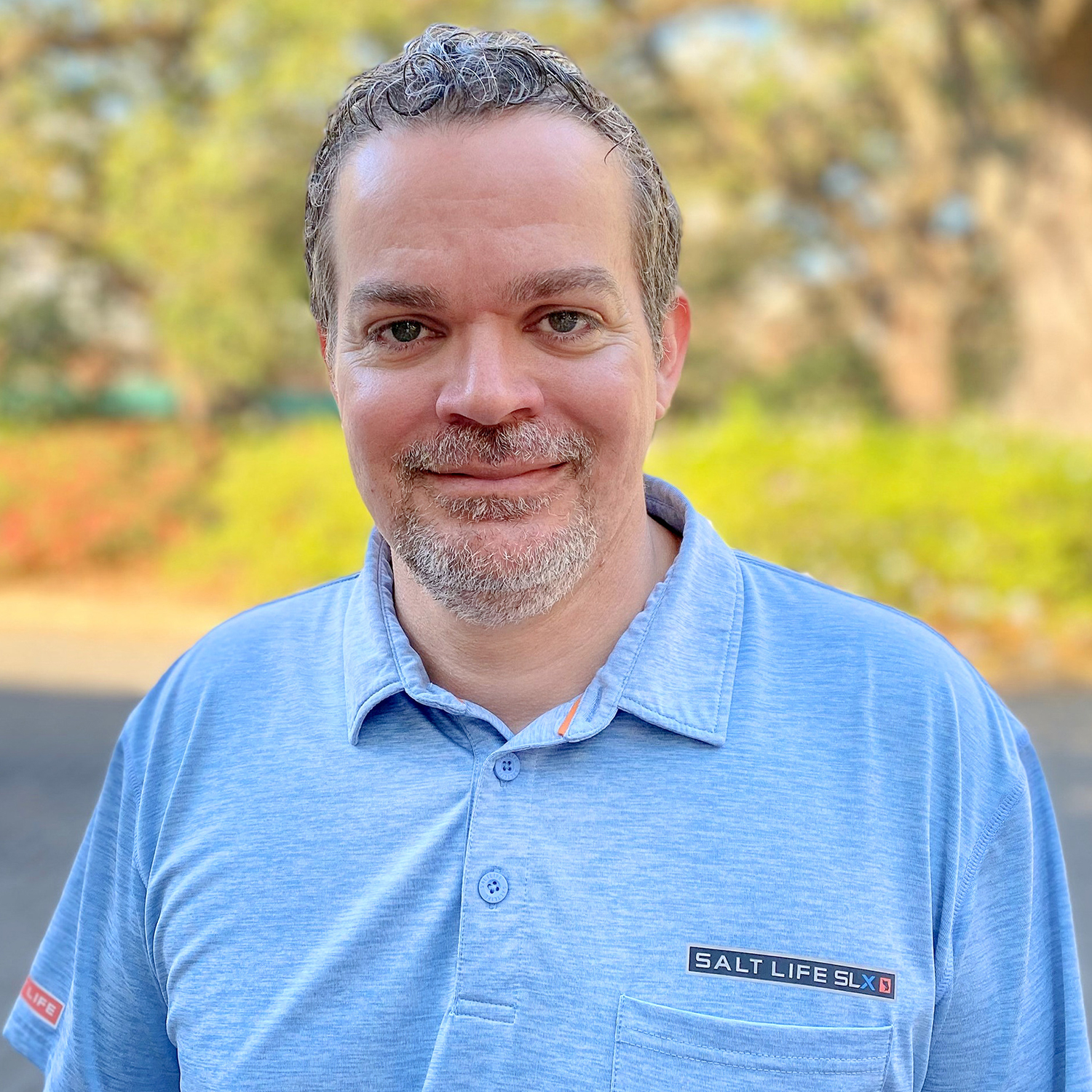
Jason Michaud
Relentless Ally
Savannah’s Superintendent
Senior Superintendent Jason Michaud never expected to end up in construction. If anything, his pivot from retail management to project management seems, at least on the surface, a complete about-face.
Jason’s decade of retail management experience was actually preparing him all along, instilling in him an innate sense of people-centered service and relationships as a foundation for project success. In Balfour Beatty, he found a leadership and behavioral framework that already valued the same qualities and empowered leaders like him to grow, develop and serve clients with unwavering dedication
In his 11-year construction career since, Jason has become one of Balfour Beatty’s top builders in the Savannah, Georgia metropolitan area, cementing his status as a Relentless Ally for our clients and partners. Across diverse market sectors, from elementary schools to municipal facilities to landmark hotels, clients have come to know Jason and Balfour Beatty as culture-setters – where everyone is empowered to pursue excellence, serve clients well and create the safest possible jobsites.
Starting in Safety
Jason first encountered Balfour Beatty’s operations while he worked as a temporary laborer on the sprawling Buckhead Atlanta family of projects, a mixed-use development district where our teams have maintained a near-constant presence as a construction partner since its 2005 inception.
Jason initially reported to Ryan Little, now safety, health and environment (Southeast) director and Brian Whetstone, now a senior superintendent on the LAX Automated People Mover project. Ryan, Brian and other leaders took note of Jason’s enthusiasm for construction (a fact that surprised him as much as anyone) and soon brought him onto the team as a safety-focused understudy. Just a foot into the construction door, to be sure, but one that proved formative.
“I spent those four years working in safety asking constant questions, growing in my understanding of construction management, safety principles and the day-to-day responsibilities of project superintendents,” Jason recalls. “Eventually, I was acting enough like a superintendent that I set on the path to becoming one.”
In the years since, rising from assistant to now senior superintendent, Jason’s SHE foundations have given him a keen understanding of the Zero Harm principles that underpin Balfour Beatty’s Georgia operations. In fact, Jason sees a strict adherence to our Zero Harm ethic as a cornerstone of our service to clients, a core value never more evident than when building a K-12 campus like his current project, the Pulaski K-8 School Conversion for Savannah-Chatham County Public School System (SCCPSS).
“Especially with students on an active campus, our team must create a service-minded, Zero Harm jobsite culture among all trade partners, laborers and visitors,” Jason says. “We base that on our relationships with administration and staff. They know our safety plan because they’re an integral part of it. They know us by name and know exactly where our fences are. As servants and partners, we could do no less.”
Leading in Excellence
Jason is quick to add that relationships don’t just matter in the dynamic between contractor and client, but also between contractor and trade partner, superintendent and day laborer. By creating a healthy jobsite culture, where open communication is encouraged and mental health and wellness are prioritized, Jason and Balfour Beatty superintendents like him empower everyone to seek excellence, ask for help when it’s needed and ultimately continue our reputation as a top builder in Savannah.
Ultimately, relationships are not one-time events. Just as our client relationships require cultivation and maintenance over time, so do the most fruitful trade partner relationships. And with project leaders like Jason at the helm and Balfour Beatty’s people-first values on- and off-site, those trade partners seem to come back again and again.
“Especially in a market with specific safety needs like K-12 education, it’s important that we build trust and camaraderie with trade partners who really understand those needs and can meet our standards of excellent service,” Jason says. “We build those relationships to last, and as much as one half of our partners on the Pulaski K-8 project will be joining us on two future SCCPSS projects.”
Still, in a fast-paced market with a diverse range of project types, Balfour Beatty is always looking to expand our network of trusted trade partners and build lasting relationships. But that can sometimes lead to trade partners taking on new or more advanced scopes of work. For Jason, centering people, relationships and servant leadership is key to helping everyone succeed.
“Everybody on a jobsite wants to succeed, and as a leader I want to do everything I can to empower success as a standard of service to our clients,” Jason says. “If I’ve built a strong relational foundation with a trade partner, it’s easy to see when they’re struggling, address the issue head-on and find out how we can work together to improve together.”
Culture Creators
Culture. Servant leadership. Relationships. While these are certainly the foundations for client service and project success, Balfour Beatty teams and leaders like Jason also know how to leverage these principles into community fun.
On the Pulaski project, Jason and the team took time out of their busy schedules to have the 2024-2025 class of fifth graders sign a steel beam destined for the entry vestibule – a mark that will hopefully last in the students’ memories for as many years as the campus serves students.
Jason’s marks on his projects, clients and partners are just as lasting: projects built right and with pride and excellence, clients that know their values are understood and shared and partners that know we care about their development and success.
Read More

Pete Distefano
Relentless Ally
Award-Winning Infrastructure Project Leadership
Balfour Beatty’s infrastructure projects across the U.S. are incredibly complex balancing acts of countless trade partners, staff teams, government agencies, safety and traffic concerns and more. Managing that degree of complexity requires a leader who remains cool under incredible pressure, prioritizes client communication and who is willing to test the boundaries of possibility in the pursuit of ever better project outcomes.
Operations Manager Pete Distefano, a 20-year Balfour Beatty veteran, may be quick to share his accolades among an equally incredible team, but his leadership on Southeast infrastructure projects produces results that speak for themselves in accelerated schedules and cost savings. Through relentless client advocacy, creative preconstruction and operations solutions and more, Pete accepts nothing less than excellence for the projects that keep our economies and communities moving like Effingham Parkway, Maysville Bypass and Surf City Bridge Replacement.
Conjuring Time Out of Thin Marl
On all these projects and, more recently, the Harkers Island Bridge Replacement in Harkers Island, North Carolina, Pete cultivates high-performing teams for whom collaboration is the central driver of innovation, all in the name of reducing risk for the North Carolina Department of Transportation (NCDOT).
Protracted delays on infrastructure projects are so common that they have virtually become a pop culture trope. But Pete’s leadership on Harkers Island – a monumental project replacing a 3,200-foot, fixed-span intracoastal bridge – led to substantial completion a year ahead of schedule. This warp-speed finish is a nearly unheard-of feat in highway and bridge construction.
The secret, according to Pete: leaning on the expertise of his team, top to bottom, and a willingness to identify innovative solutions, especially during preconstruction with ample lead time to make them happen. Using traditional methods to prepare for and place the bridge-supporting piles, for example, would have required significant excavation work.
“Operations Vice President Jay Boyd had the idea to save significant time by using a probe to punch through the hard subsurface layer of marl that necessitated excavation,” recalls Pete. “The idea was fairly simple but also ambitious and required NCDOT approval with assurance that the idea was feasible.”
Our team worked to negotiate a change order and project credit, but that financial incentive was contingent upon the idea succeeding. With now universal stakes – financial, schedule and Balfour Beatty’s reputation for operational excellence – Pete rallied the team to make this innovative idea a successful reality.
Achieving substantial completion a year ahead of schedule is a staggering accomplishment on its own, but the time saved can reap further dividends. From savings on labor to minimizing community impact and the intangible benefits of opening an arterial roadway far earlier than expected, our team delivered critical goals for NCDOT.
“As a team, we understand how critical these projects are to the communities where we live and work,” Pete says. “Our roadways and bridges move goods across the state, people to work and students to schools. Our work matters, and any effort to accelerate that work is never effort wasted.”
Through it all, Pete kept the entire project team united around the mission, maintaining a collaborative spirit as they worked through the challenges at hand and identified the best and most efficient path forward.
From Operations to Industry Leadership
As the Harkers Island project neared its ambitious early completion, the construction industry at large took notice – both of the project’s constructability merits and of Pete’s stellar leadership. In addition to the punch-driven piles, Pete and the team identified an opportunity to pursue other avenues of innovation, including testing state-of-the-art industrial exoskeleton systems for increased safety during formwork.
Pete was invited to the JEC Summit on Building and Infrastructure in Paris, France, to present on the project’s successes. In addition to the punch-driven support piles, the new Harkers Island Bridge is one of the first of its kind in the U.S. to eschew traditional steel-reinforced concrete in favor of glass and carbon fiber reinforced polymer fiber throughout its concrete structures. As steel-less, non-metal materials, GFRP and CFRP are far less prone to corrosion over time, an especially critical consideration for maximizing the lifespan of a coastal bridge structure.
Harkers Island also represented a significant accomplishment in terms of environmental protection and safety considerations. Federal and state regulations prohibit pile-driving activities in coastal waterways after a certain date each year to protect fish spawning grounds.
“Through months of team grit and overtime work, careful coordination with our environmental and safety teammates and state representatives, we kept the project moving while still protecting a vital coastal economy and ecosystem,” praises Pete.
Industry organizations also duly recognized the incredible successes of the entire Harkers Island project team, and this time with hardware. The Carolinas Associated General Contractors (CAGC) honored the team with a 2024 Pinnacle Award for exceptional delivery of the $60 million project, presented during CAGC’s 104th Annual Conference in Charleston, South Carolina.
“I’m incredibly proud of the feat our team has accomplished at Harkers Island, and especially because I know it was such a team effort,” Pete adds. “We understood the mission, understood the value of acceleration to our client and we pulled out every stop to make it happen safely, environmentally consciously and affordably.”
A True Construction Professional
Even as Pete’s project leadership and Balfour Beatty’s expertise garner accolades, awards and conference appearances, Pete maintains that he loves his job not for the recognition, but love of the construction process itself. Indeed, even for the excitement of using heavy civils machinery and state-of-the-art aerial videography drones.
“Our Buildings teammates build incredible projects, but on the infrastructure side, the machines are bigger,” Pete says with a wry smile. “That still excites me, but I enjoy even more that we get to build the infrastructure that will connect people, places and business for decades to come.”
Read More

